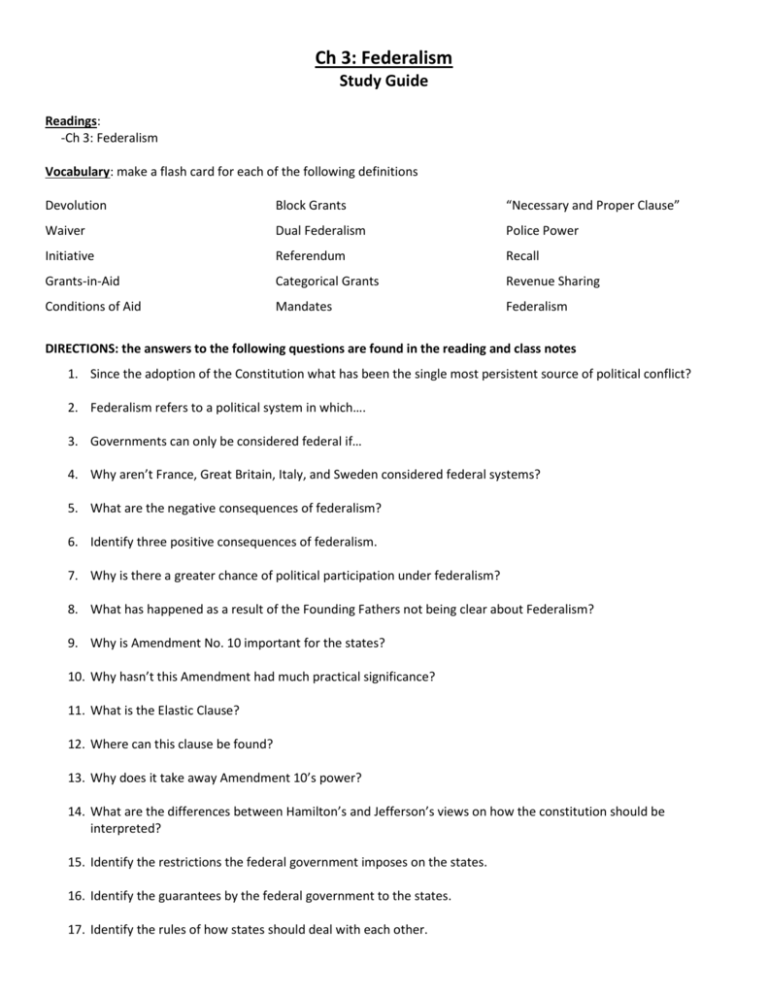Ch 3: Federalism Study Guide
advertisement

Ch 3: Federalism Study Guide Readings: -Ch 3: Federalism Vocabulary: make a flash card for each of the following definitions Devolution Block Grants “Necessary and Proper Clause” Waiver Dual Federalism Police Power Initiative Referendum Recall Grants-in-Aid Categorical Grants Revenue Sharing Conditions of Aid Mandates Federalism DIRECTIONS: the answers to the following questions are found in the reading and class notes 1. Since the adoption of the Constitution what has been the single most persistent source of political conflict? 2. Federalism refers to a political system in which…. 3. Governments can only be considered federal if… 4. Why aren’t France, Great Britain, Italy, and Sweden considered federal systems? 5. What are the negative consequences of federalism? 6. Identify three positive consequences of federalism. 7. Why is there a greater chance of political participation under federalism? 8. What has happened as a result of the Founding Fathers not being clear about Federalism? 9. Why is Amendment No. 10 important for the states? 10. Why hasn’t this Amendment had much practical significance? 11. What is the Elastic Clause? 12. Where can this clause be found? 13. Why does it take away Amendment 10’s power? 14. What are the differences between Hamilton’s and Jefferson’s views on how the constitution should be interpreted? 15. Identify the restrictions the federal government imposes on the states. 16. Identify the guarantees by the federal government to the states. 17. Identify the rules of how states should deal with each other. 18. How did the Supreme Courts ruling in McCulloch v. Maryland expand the powers of Congress? 19. How did the Civil War impact the meaning of federalism? 20. What is the difference between interstate commerce and intrastate commerce? 21. How does this relate to federalism? 22. Until recently the national government could basically control all forms of economic activity and the Supreme Court would uphold the law. Identify how the following give power back to the states: a. United States v. Lopez: b. Overturned the Violence Against Women Act: c. United States v. Morrison: d. Printz v. United States: e. Alden v. Maine: f. Federal Maritime Commission v. South Carolina Ports Authority: 23. Using police powers what can a state enact and enforce? 24. How do initiatives, referendums, and recalls contribute to federalism? 25. How did federal grants-in-aid change during the 1960’s? 26. What is the consequence of this change? 27. Define, explain, and give and example for each of the following: a. Categorical Grants b. Block Grants c. Revenue Sharing d. Conditions of Aid e. Mandates 28. What is the goal of devolution?








